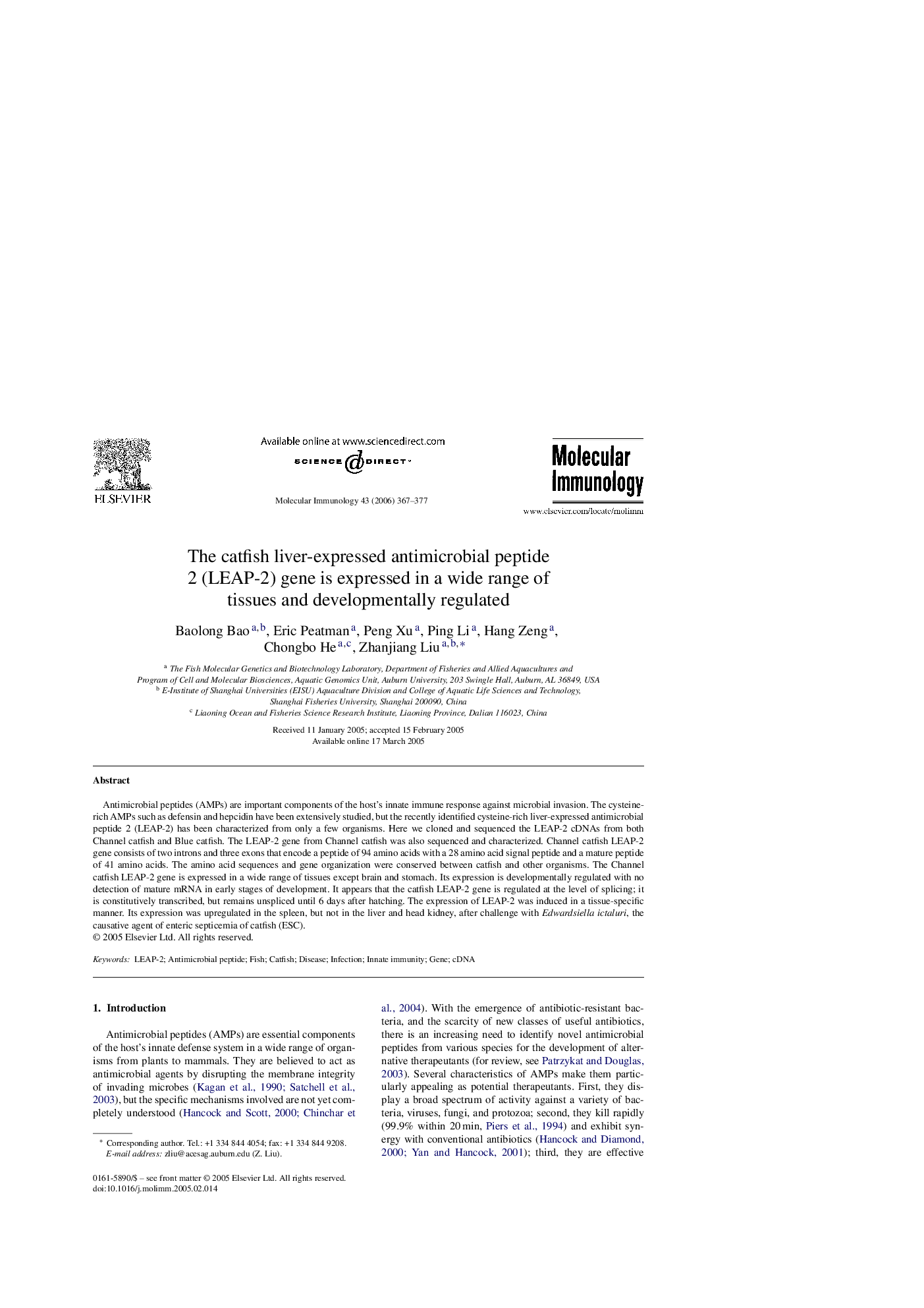| Article ID | Journal | Published Year | Pages | File Type |
|---|---|---|---|---|
| 2833427 | Molecular Immunology | 2006 | 11 Pages |
Antimicrobial peptides (AMPs) are important components of the host's innate immune response against microbial invasion. The cysteine-rich AMPs such as defensin and hepcidin have been extensively studied, but the recently identified cysteine-rich liver-expressed antimicrobial peptide 2 (LEAP-2) has been characterized from only a few organisms. Here we cloned and sequenced the LEAP-2 cDNAs from both Channel catfish and Blue catfish. The LEAP-2 gene from Channel catfish was also sequenced and characterized. Channel catfish LEAP-2 gene consists of two introns and three exons that encode a peptide of 94 amino acids with a 28 amino acid signal peptide and a mature peptide of 41 amino acids. The amino acid sequences and gene organization were conserved between catfish and other organisms. The Channel catfish LEAP-2 gene is expressed in a wide range of tissues except brain and stomach. Its expression is developmentally regulated with no detection of mature mRNA in early stages of development. It appears that the catfish LEAP-2 gene is regulated at the level of splicing; it is constitutively transcribed, but remains unspliced until 6 days after hatching. The expression of LEAP-2 was induced in a tissue-specific manner. Its expression was upregulated in the spleen, but not in the liver and head kidney, after challenge with Edwardsiella ictaluri, the causative agent of enteric septicemia of catfish (ESC).
